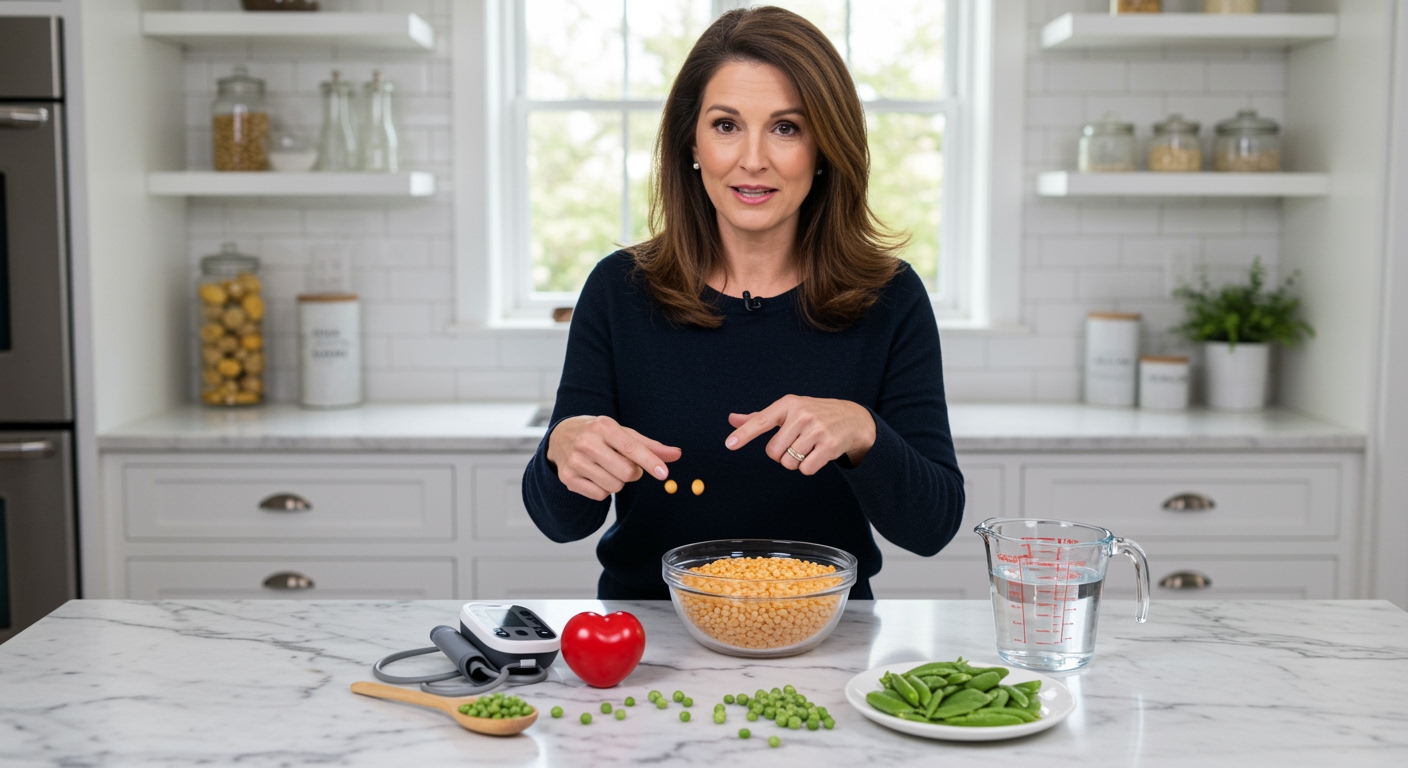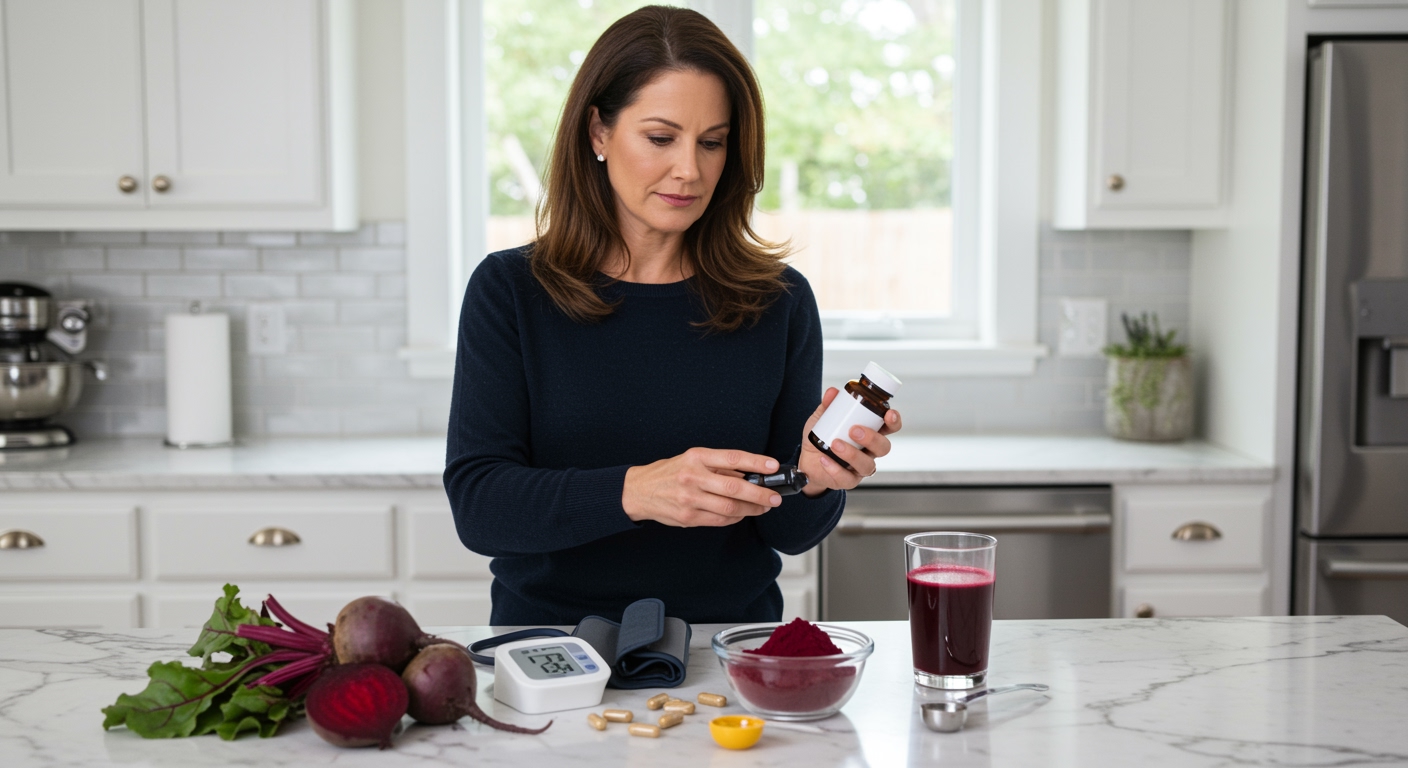✪ Key Takeaway: Split peas can help manage hypertension through their high potassium content and blood pressure-lowering protein compounds.
Introduction
Your doctor just told you that your blood pressure numbers are climbing into dangerous territory.
You might be wondering if simple dietary changes could help bring those numbers down naturally. Many people search for affordable, accessible foods that can support heart health without breaking the bank or requiring dramatic lifestyle overhauls.
Hi, I’m Abdur, your nutrition coach and today I’m going to explain how split peas can become a powerful ally in your fight against high blood pressure.
What Makes Split Peas Special for Blood Pressure?
Split peas pack an impressive nutritional punch that directly targets the mechanisms behind high blood pressure.
One cup of cooked split peas delivers about 710 milligrams of potassium, which is roughly 15% of your daily needs. This mineral works like a natural diuretic in your kidneys, helping your body flush out excess sodium that raises blood pressure.
The protein content in split peas also plays a crucial role in blood pressure management. Research shows that certain amino acids in legume proteins can help relax blood vessel walls, making it easier for blood to flow through your arteries.
Split peas contain about 16 grams of protein per cooked cup, making them one of the most protein-dense plant foods available. This protein helps maintain healthy blood vessel function while supporting overall cardiovascular health.
The fiber in split peas works alongside these other nutrients to create a comprehensive approach to blood pressure control. Soluble fiber helps reduce cholesterol levels, which can improve blood flow and reduce strain on your heart.
✪ Fact: Split peas contain more potassium per serving than bananas, making them an excellent choice for blood pressure management.
How Does the Science Support Split Peas?
Clinical research provides compelling evidence for split peas in blood pressure management.
A study published in the American Journal of Hypertension found that people who consumed pea protein supplements experienced significant reductions in both systolic and diastolic blood pressure over 8 weeks. The researchers noted that pea protein was particularly effective in people with mild to moderate hypertension.
The mechanism behind this effect involves ACE inhibition, a process that helps blood vessels relax. Split pea proteins contain natural compounds that work similarly to prescription ACE inhibitor medications, but without the side effects.
Another important factor is the magnesium content in split peas. This mineral helps regulate calcium movement in your blood vessel walls, preventing them from contracting too tightly and raising blood pressure.
The combination of potassium, magnesium, and protein creates what researchers call a synergistic effect. This means these nutrients work better together than they would individually, amplifying the blood pressure-lowering benefits.
Studies also show that regular legume consumption, including split peas, is associated with lower rates of cardiovascular disease and better long-term blood pressure control.
✪ Pro Tip: Combine split peas with other potassium-rich foods like spinach or tomatoes to maximize blood pressure benefits.
What Is the Best Way to Eat Split Peas?
The preparation method can significantly impact how well your body absorbs the blood pressure-lowering nutrients in split peas.
Soaking split peas for 4-6 hours before cooking helps reduce cooking time and makes the nutrients more bioavailable. This process also helps break down compounds that can interfere with mineral absorption.
Cooking split peas with minimal salt is crucial for blood pressure management. Instead, use herbs and spices like garlic, turmeric, or bay leaves to add flavor without increasing sodium intake.
The ideal serving size for blood pressure benefits is about half a cup of cooked split peas, consumed 3-4 times per week. This provides consistent nutrient intake without overwhelming your digestive system.
Split pea soup remains one of the most popular and effective ways to consume these legumes. The liquid form helps with hydration, which supports healthy blood pressure, while the cooking process makes nutrients easier to absorb.
You can also add cooked split peas to salads, grain bowls, or use them as a base for veggie burgers. The key is consistency rather than large occasional portions.
✪ Note: Start with smaller portions if you’re new to eating legumes to avoid digestive discomfort while your gut bacteria adjust.
Are There Any Concerns or Limitations?
While split peas offer significant benefits for blood pressure, certain considerations are important to understand.
People taking blood pressure medications should monitor their levels closely when adding split peas to their diet. The combined effect of medication and dietary changes could potentially lower blood pressure too much.
Split peas contain purines, compounds that break down into uric acid. People with gout or kidney stones should consume them in moderation and consult with their healthcare provider.
The high fiber content can cause digestive issues if you increase intake too quickly. Start with small portions and gradually increase over 2-3 weeks to allow your digestive system to adapt.
Some people experience bloating or gas when eating legumes. This usually improves with regular consumption as your gut bacteria adjust to processing the fiber and complex carbohydrates.
Split peas are not a magic bullet for hypertension. They work best as part of an overall heart-healthy diet that includes other vegetables, fruits, whole grains, and limited processed foods.
✪ Pro Tip: Keep a food diary to track how split peas affect your blood pressure readings and overall well-being.
The Bottom Line
Split peas can be a valuable addition to a blood pressure management strategy, offering potassium, protein, and other heart-healthy nutrients in an affordable, versatile package.
Real nutrition is about making simple, sustainable choices that support your health goals without breaking your budget or overwhelming your lifestyle. Split peas represent exactly this kind of practical, evidence-based approach to managing hypertension through food.
I would love to hear about your experience with split peas or any questions you might have about incorporating them into your blood pressure management plan. Please share your thoughts in the comments below.
References
At NutritionCrown, we use quality and credible sources to ensure our content is accurate and trustworthy. Below are the sources referenced in creating this article:
- PubMed: Pea protein shows blood pressure lowering potential
- NutraIngredients USA: Pea protein shows blood pressure lowering potential
- PMC: Legume consumption and cardiovascular disease risk
- Medical News Today: Split peas nutrition facts and health benefits





